Like everyone here, I feel honored to have had the opportunity to serve our country. I did so for three decades before entering the private sector a quarter century ago. I now chair a globally engaged business development company and the Committee for the Republic. I also lecture at Brown University’s Watson Institute, among other places.
I confess that I don’t miss either the diplomatic trench warfare of the Cold War or the idiocies and penuries of government life. My service took quite a toll on my family and me. Still, we had the satisfaction of making a small difference or two to our country and the world. A bit of foresight and a lot of luck enabled me to play a role in some of the great events of the last third of the 20th century. I can’t imagine a more fulfilling career.
Among other things, I helped to enlist China in the containment of the Soviet Union and then incorporate it into the American-led, capitalist world order. I was part of the imaginative U.S. diplomacy that ended colonialism and foreign interventions in Africa. I contributed to heading off a military coup against the end of apartheid in South Africa. I had the ambassadorship of the century during the war to contain Iraqi aggression and liberate Kuwait. And, at DOD, I was the principal architect of the expansion of the Atlantic alliance through the Partnership for Peace. There are lots of things to be learned from the successes and failures of such endeavors. Our diplomatic service has lacked a mechanism to collect and apply these lessons to its professionalization.
Academics analyze the past to anticipate the future. Diplomats aim to shape the times to come. The Center for the Study of the Conduct of Diplomacy seeks to empower future generations of diplomats with useful knowledge of their predecessors’ successes and failures. I believe this is essential if diplomacy is to become the recognized profession that it needs to become.
So, I welcomed Center Director Doell’s invitation to talk to you about the inner history of the 1981-82 effort to establish a modus vivendi with China on US arms sales to Taiwan. There are many lessons for diplomatic professionals to draw from the Reagan administration’s handling of the Taiwan arms sales controversy. I know of no previous effort to harvest these lessons. Much of the diplomacy took place at my dining table as DCM in Beijing. The president personally directed every aspect of the process. I have not previously spoken about what worked and what didn’t and why.
The US approach epitomized what I call ‘deep diplomacy,’ that is, the rearrangement of circumstances to induce others to conclude that they should do things that serve our interests – not to please us, but to secure their own interests. The negotiations illustrated how a dangerous impasse born of very different perspectives rooted in domestic politics could – in the common interest — be set aside for future resolution. The talks showed the value of mutual trust between individual negotiators as well as the importance of well-timed direct communication between leaders. The arms control agreement the talks produced yielded the results the US negotiators had hoped it would for a solid decade before it fell victim to the exigencies of American politics. Ultimately, this showed the danger of bottling up problems with military deterrence rather than pursuing their resolution through patient diplomacy.
As George Kennan observed, “History does not forgive us our national mistakes because they are explicable in terms of our domestic politics. . .. A nation which excuses its own failures by the sacred untouchableness of its own habits can excuse itself into a complete disaster.” The politically expedient abandonment of solemnly negotiated commitments to China devalued our word as Americans. It has left a legacy of Chinese distrust that continues to hobble Sino-American relations today. A reputation for reliability, once lost, is almost impossible to restore.
Some of you may not be completely familiar with the origins and evolution of the Taiwan question and the issue of US arms sales to the island. Let me briefly set the scene before trying to extract some lessons for future diplomacy from it.
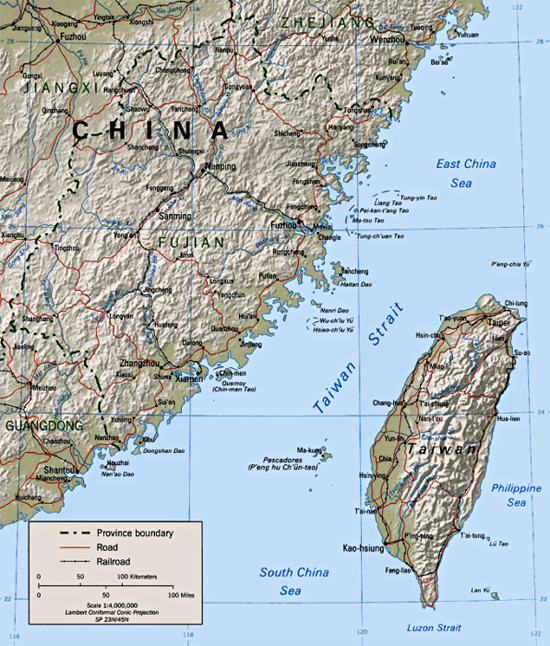
Simply put, the Taiwan question is what the political relationship between Taiwan and the rest of China is or should be. Until 1895, Taiwan was a province of China. In that year, the Japanese Empire forcibly annexed it. Five decades later, at the end of the Second World War, Japan surrendered Taiwan to the then-Chinese government. The simultaneous end of Japan’s fourteen yearlong rampage through China rekindled the struggle between Chiang Kai-shek’s Nationalist Party and Mao Zedong’s Communist Party over which would rule China.
In 1949, Mao’s People’s Liberation Army (PLA) defeated Chiang’s army and replaced his KMT regime in most of China. Chiang and roughly two million of his troops withdrew to Taiwan. The PLA prepared to bring the Chinese civil war to an end by conquering Taiwan. As 1950 began, the United States, which continued to maintain diplomatic relations with Chiang’s government, declared that we did not consider Taiwan strategically significant enough to intervene to save it.
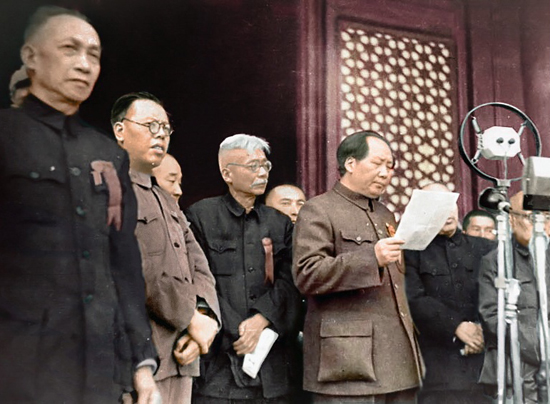
But in mid-1950, north Korea stormed over the 38th parallel to unify all of Korea under its rule. Two days later, the United States placed the 7th Fleet between Chiang’s forces and the PLA. The stated purpose of this US intervention was to preclude the expansion of the war in Korea to other parts of Asia. Washington demanded that each side in the Chinese civil war cease attacks on the other. US intervention effectively suspended but did not end their war, which is in abeyance but unconcluded to this day.
By October 1950, as all of Korea was about to fall to General Douglas MacArthur, Chinese forces intervened to preserve north Korea as a buffer state. The Korean conflict became an undeclared war between the United States and the People’s Republic of China (PRC). Mutual hostility escalated. In 1954, Washington concluded a defense treaty with Chiang Kai-shek’s rump Chinese government, placing Taiwan under American protection as the United States sought to isolate, contain, and overthrow the communist regime on the China mainland by both fair means and foul.
For the next twenty years, American diplomats worked hard to sustain the legal fictions that there was only one China; that its government was in Taipei, not Beijing; that this government could and should represent China internationally; and that it was not a government in exile because Taiwan was part of China. I took part in our defense of these propositions. It worked until 1971, when the international community rebelled and rejected Taipei’s preposterous continuing representation of China in the U.N.
Two decades of success at enforcing Beijing’s ostracism is proof that, at our best, American diplomats can work miracles in the service of grand strategy, including nullifying unwelcome realities. This is worth remembering because, as has become obvious, we can also be utterly ineffective when there is no strategy to match resources to realistic objectives or to guide diplomatic tactics.
In 1969, clashes broke out along the Sino-Soviet frontier. President Nixon, who had already come to the conclusion that no world order excluding China could be stable, feared the geopolitical consequences of a Soviet military conquest or humiliation of China. He switched US policy from using Taiwan to contain the PRC to enlisting the PRC to contain the USSR. Doing so required addressing Chinese demands that the United States recognize Beijing rather than Taipei as the capital of an undivided China, that we withdraw our military presence from Taiwan, and that we terminate our defense treaty with it.
In 1972, Nixon dramatically visited Beijing, the capital of a then-hostile government America did not recognize. He finessed the Taiwan question by acknowledging that “all Chinese on either side of the Taiwan Strait maintain there is but one China and that Taiwan is a part of China,” adding that “the United States Government does not challenge that position.” He announced a US“interest in a peaceful settlement of the Taiwan question by the Chinese themselves. With this prospect in mind,” he affirmed “the ultimate objective of the withdrawal of all US forces and military installations from Taiwan.” In the meantime, he pledged to “progressively reduce [US] forces and military installations on Taiwan as the tension in the area diminishes.”
This was artful language. Uniquely for a diplomatic document, it was preceded by several pages of candid recitations by both sides of profound disagreements about Vietnam, Laos, Cambodia, Korea, Japan, and Kashmir. This was Zhou Enlai’s diplomatically inventive proposal. Reaffirming such Sino-American differences reassured our respective security partners that rapprochement between the PRC and the United States did not imply a sellout of their interests. Candid statements of disagreements have a place in diplomacy.
Nixon privately assured Mao and Zhou that he would recognize the PRC in his second term. Watergate then struck him down. Gerald Ford’s accidental presidency was too politically precarious for him to implement Nixon’s pledge. The US commitment to Taiwan’s defense was beginning to change from a strategic expedient to a matter of national honor.
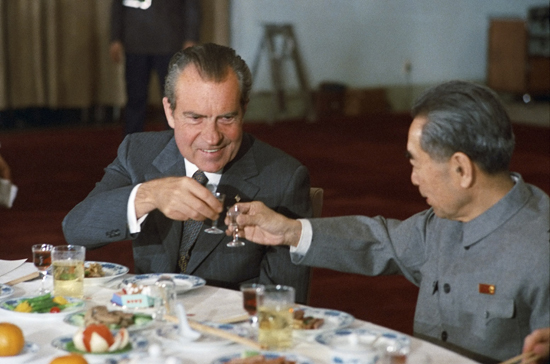
It was left to Jimmy Carter to “normalize” relations with the PRC. As 1978 faded into 1979, Carter did so with Deng Xiaoping. Carter’s purpose was to intensify pressure on the Soviet Union. For his part, Deng wanted an opening to the United States both to de-Sovietize China’s domestic political economy and to put Moscow off balance as he used force to convince Hanoi not to ally with the USSR to encircle China because this would cost Vietnam vastly more than it could ever hope to gain.
To “normalize” diplomatic relations with Beijing, Washington had to “abnormalize” them with the rival Chinese government in Taipei it had previously championed. While retaining substantive, nominally unofficial ties to Taiwan, the U.S. transferred formal recognition and relations from Taipei to Beijing and withdrew its forces and installations from Taiwan. The Chinese declared their determination to make best efforts to reunify their divided country by peaceful rather than violent means. The president gave the one-year notice needed to terminate the US defense treaty with Taipei and suspended further weapons sales throughout 1979, while the treaty was expiring. But he informed the Chinese that “sales of carefully selected defensive weapons on a restrained basis” to Taiwan would resume in 1980. Not surprisingly, they registered strong objections to this and reserved the right to raise the issue for resolution later. Nevertheless, they went ahead with “normalization.”
In Ronald Reagan’s 1980 presidential campaign, he pledged to restore official relations with Taipei and to upgrade Taiwan’s military capabilities against the PRC through unrestricted arms sales. But when he entered office, he became aware of the extent of clandestine Sino-American cooperation against the USSR. Since 1980, the US and PRC had jointly operated major intelligence bases on Chinese soil. These more than replaced the capabilities of those lost to the Islamic revolution in Iran the year before. China had its own covert program in support of the Afghan resistance, but it was also supplying us with many hundreds of millions of dollars-worth of weapons each year for our much larger effort to dislodge the Soviets from Afghanistan. And China was providing us with tens of millions of dollars-worth of MiG-21s and other Soviet-designed, Chinese-manufactured equipment to enable our armed forces to train against the Soviet threat.
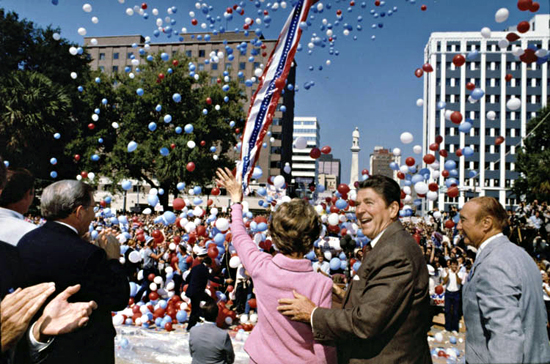
Reagan abandoned his proposed restoration of official relations with Taipei. But he held fast to the idea of selling Taiwan a new generation of aircraft – the so-called “FX.” Beijing reacted by redoubling its conciliatory offers to Taiwan, expressing mounting fury at what it saw as a renewed American invasion of Chinese sovereignty and internal affairs, and audibly reducing its overt alignment with the US against the USSR
I took charge of our infant embassy in Beijing in early July 1981 as this controversy was just beginning. It rapidly intensified. By October, the Chinese were signaling with ever greater urgency that, if the United States did not agree to a schedule to end arms sales to Taiwan, they might downgrade or even break relations with us. China had earlier downgraded relations with the Netherlands over submarine sales to Taiwan, lending this threat a measure of credibility. (I was originally skeptical that the Chinese would do the same to us. But, years later, I heard from a reliable source that Deng Xiaoping had prepositioned an announcement of a similar move against the United States at Radio Beijing.)
In late 1981, as both sides began to formulate negotiating positions, the president asked the Joint Chiefs whether there was in fact a compelling case for the sale of the FX to Taiwan. Around the same time, an effort to open bilateral negotiations produced only a thundering diatribe by a Chinese vice foreign minister, who spoke to newly arrived US Ambassador Arthur Hummel and me from a raised dais in the former Austro-Hungarian embassy in Beijing’s Legation Quarter. Indirectly, we let the Chinese know that the vice minister’s haughty harangues would take us places neither side should want to go.
Meanwhile, the JCS’s worst-case analysis determined that Taiwan did not really need the FX. In January 1982, Assistant Secretary of State for East Asia and the Pacific Affairs John Holdridge arrived in Beijing to inform the Chinese that we no longer planned to sell an advanced aircraft to Taiwan. His visit enabled China to switch to a new and more congenial, though equally tendentious, chief negotiator. Initial meetings with him also gained no traction. After a few unproductive encounters, we proposed that the chief negotiators each delegate the task of drafting a text to a select group of subordinates.
These talks, four to a side, took place over lunches at my apartment. My chef – now my foster son – served up superb Chinese cuisine for my guests, creating an atmosphere conducive to informality and candor. As the great British statesman, Lord Palmerston remarked: “dining is the soul of diplomacy.” (See “Entertainment” in The Diplomat’s Dictionary.”)
My Chinese counterparts and my team knew each other well from numerous previous diplomatic interactions. They were tough professionals whose word could be relied upon. Like me and my American colleagues, they operated under very tight instructions and floated no proposal without assurances from the very highest level of their government that tradeoffs based on it might prove acceptable.
The Chinese had the advantage of being on their home ground, with direct access to their superiors. We in the American embassy were 7,000 miles from Washington and President Reagan. There were no secure phones or email in those days. We were dealing with issues that were politically explosive and tightly compartmented back home. To protect the privacy of our communications with the very able team supporting us in Washington, we wrote them in romanticized Chinese, not English. There were no leaks.
Slowly, the two side began to build a text based on “I think I could persuade my government to say this if your government would say that.” All agreements over the dining table were tentative and ad referendum to internal policy processes personally overseen by President Reagan and Deng Xiaoping. Occasional formal meetings at the ambassadorial level were convened to nail down tradeoffs that had been found to be mutually agreeable. Both sides understood that nothing was final until everything was final.
On the U.S. side, we understood our objectives to be:
- the restoration of an overt entente (limited partnership) with the PRC against the Soviet Union;
- the enhancement of prospects for a peaceful settlement of the Taiwan issue between the Chinese parties;
- a linkage between peace in the Taiwan Strait and any reduction in arms sales to Taiwan;
- the avoidance of any schedule to end such arms sales;
- the preservation of a credible bargaining position for Taipei vis-à-vis Beijing; and
- setting aside the Taiwan arms sales issue as an obstacle to expanded cooperation with the PRC.
For their part, the Chinese negotiators sought an outcome that:
- fixed an early date for the complete end of US arms sales to Taiwan, thereby putting pressure on the island to seek terms for its reunification with the rest of China;
- avoided any commitment to use only peaceful means to end the Chinese civil war and reunify China;
- removed the Taiwan arms sales issue as a domestically insuperable political obstacle to expanded cooperation with the United States;
- affirmed “respect for … sovereignty and territorial integrity and noninterference in each other’s internal affairs” as the guiding principles of Sino-American relations; and
- left open the possibility, mutatis mutandis, of eventual rapprochement with the neighboring USSR.
Both sides shared an interest in putting the Taiwan arms sales issue behind us. The question was how to do this in a way that could withstand the inevitable political backlash from opponents of compromise in both countries. Each side had to make its own judgments about what might do that for it.
The talks made progress, but tediously. In May 1982, President Reagan sent his vice president, George H. W. Bush to Beijing to convey letters from him to Deng Xiaoping as well as China’s premier and party chairman in the hope that this might jumpstart progress. In his letters, Reagan stressed the importance of bilateral cooperation, recognized the significance of China’s willingness to attempt a peaceful resolution of the Taiwan issue, and declared his willingness to reduce arms sales to Taiwan if China maintained a peaceful approach to the island. The leadership of both countries had now clearly communicated a desire to put the Taiwan arms sales issue behind them and get on with practical business.
This accelerated progress in the negotiations. So did personnel changes in Washington, which removed the pro-deal Alexander Haig as secretary of state and replaced him with the more skeptical George Shultz. This convinced the Chinese that delay risked a relapse into rancor. By the end of July, after intense deliberations in both capitals, the two sides agreed a compromise.
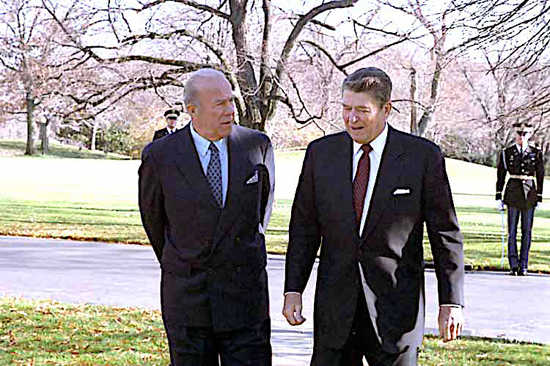
In a Joint Communiqué issued August 17, 1982, China unilaterally strengthened its commitment to a “fundamental policy to strive for a peaceful solution to the Taiwan question.” The US unilaterally stated that in light of this Chinese policy, the United States did “not seek to carry out a long-term policy of arms sales to Taiwan, that its arms sales to Taiwan [would] not exceed, either in qualitative or in quantitative terms, the level of those supplied in recent years since the establishment of diplomatic relations between the United States and China, and that it [intended] gradually to reduce its sale of arms to Taiwan, leading, over a period of time, to a final resolution.”
The negotiations thus concluded with the Chinese having had to accept that US arms sales to Taiwan would continue indefinitely, though at steadily declining levels. The contradiction between normal relations with Beijing and continuing assistance to its adversary in the unconcluded Chinese civil war was left unresolved. The US was compelled to add awkward specifics to its earlier undertaking to sell only “carefully selected defensive weapons on a restrained basis.” Neither side had been able to obtain more than an implied linkage between its own commitments and those of the other. As we issued the Communiqué, the negotiators on both sides figuratively held our noses.
But the compromise the two sides had reached had positive strategic consequences. Without Americans prescribing any particular course of action to either party to the Taiwan dispute, we had created circumstances that induced them both to set aside military confrontation in favor of some sort of “peaceful settlement of the Taiwan question” between themselves. Beijing knew that the progressive reduction in US arms sales to Taiwan depended on its visibly reducing its military threat to Taiwan. China thus acquired an interest in proving its peaceful intent, which it proceeded to do in both word and deed. Meanwhile, the prospect of steadily diminishing American military assistance left the Chinese on Taiwan with no choice but to consider realistic alternatives to military confrontation to manage relations with Chinese on the mainland. Within a decade, Taipei responded to Beijing’s repeated offers of political dialogue.
The realization by both Beijing and Taipei that rapprochement offered a more promising approach than military posturing to the management of cross-Strait relations took time to take root. But it did take root. For a time, it even survived the abrupt US abandonment of limits on American arms sales to Taiwan a decade after we had agreed to them.
In September 1992, the collapse of the common Soviet enemy, the deterioration in US-China relations after the 1989 Tiananmen incident, and a long-running campaign by proponents of military versus diplomatic approaches to securing Taiwan came together. The expediencies of US election-year politics produced a massive sale of advanced fighter aircraft to Taiwan – the largest arms sale package to any single foreign purchaser to that date. So much for the progressive reduction of US arms sales to Taiwan as an incentive for a sustained peaceful approach to reunification by Beijing! Military deterrence had shoved diplomacy aside in America’s handling of Chinese nationalism. This turnabout froze cross-Strait rapprochement and encouraged Taiwan independence advocates to step up their defiance of Beijing, while provoking the remilitarization of cross-Strait relations.
And that’s how the stage got set for us to arrive where we are. The military balance in the Taiwan Strait now clearly favors Beijing. We’re back in the business of transferring advanced weapons systems to Taiwan. This creates an increasing danger that the Chinese civil war could reignite, leading to our first war with a nuclear power over where its borders lie.
Remarks to a “master class in diplomacy” of the Center for the Study of the Conduct of Diplomacy, The Foreign Service Institute, Arlington, Virginia, Aug. 19, 2019.
Ambassador Chas W. Freeman, Jr. chairs Projects International, Inc. He is a retired US defense official, diplomat, and interpreter, the recipient of numerous high honors and awards, a popular public speaker, and the author of five books. He was a former US Assistant Secretary of Defense, ambassador to Saudi Arabia (during operations Desert Shield and Desert Storm), acting Assistant Secretary of State for African Affairs, and Chargé d’affaires at both Bangkok and Beijing. He began his diplomatic career in India but specialized in Chinese affairs. (He was the principal American interpreter during President Nixon’s visit to Beijing in 1972.) Reprinted with permission from his blog.




